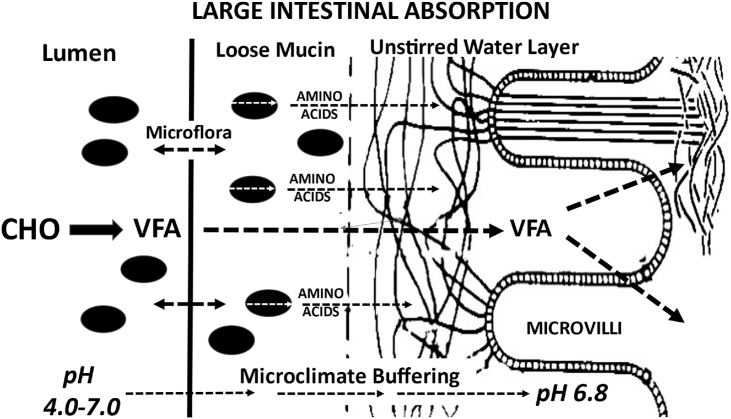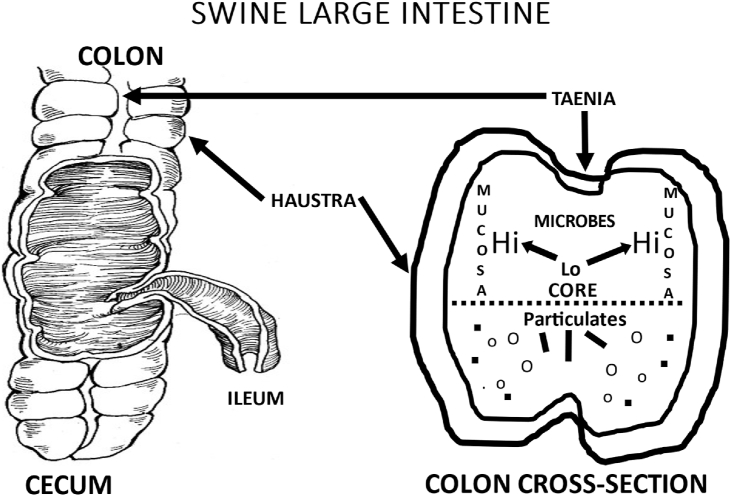Endogenous mucin conveyed to the mucosa with microbes can assure lumen fermentation and large intestinal security–swine versus fowl
Abstract
Endogenous protein leaving the ileum largely consists of accrued mucins from the upper gastrointestinal tract (GIT) that had resisted digestion. The amounts released rely on their mucosal generation during enteral feeding which vary with age as well as diet. These digestion resistant proteins of endogenous origin continue to be unavailable in the large intestine, whereas those of dietary origin provide amino acids that largely support the existing microbial population while denying limited amounts for absorption. Other mucins pre-exist within the large intestine as two layers at the lumen surface. A loose layer harboring a diverse microbial population is superimposed on the unstirred water layer (USWL) which simultaneously acts as an obstacle to microbes at the loose layer while performing as a molecular sieve for nutrients. The USWL is formed through interplay between enterocyte and goblet cells; however, the basis for presence of the loose layer is elusive. Large intestinal fermentation predominates within the colon of swine, whereas fowl employ their ceca. Motility within the colon of swine segregates fine materials into haustrae out-pocketings that parallel their placement within the ceca of fowl. Viscous mucins from small intestinal endogenous losses may envelop microbes within the large intestinal lumen to present successive adherents on the USWL that assemble its loose layer. The loose layer continually functions as a microbial reservoir in support of lumen fermentation. Microbial catabolism of mucin within the loose layer is known to be slow, but its proximity to the enterocyte is of advantage to enterocyte absorption with by-product amino acids fostering the USWL.




 求助内容:
求助内容: 应助结果提醒方式:
应助结果提醒方式:


